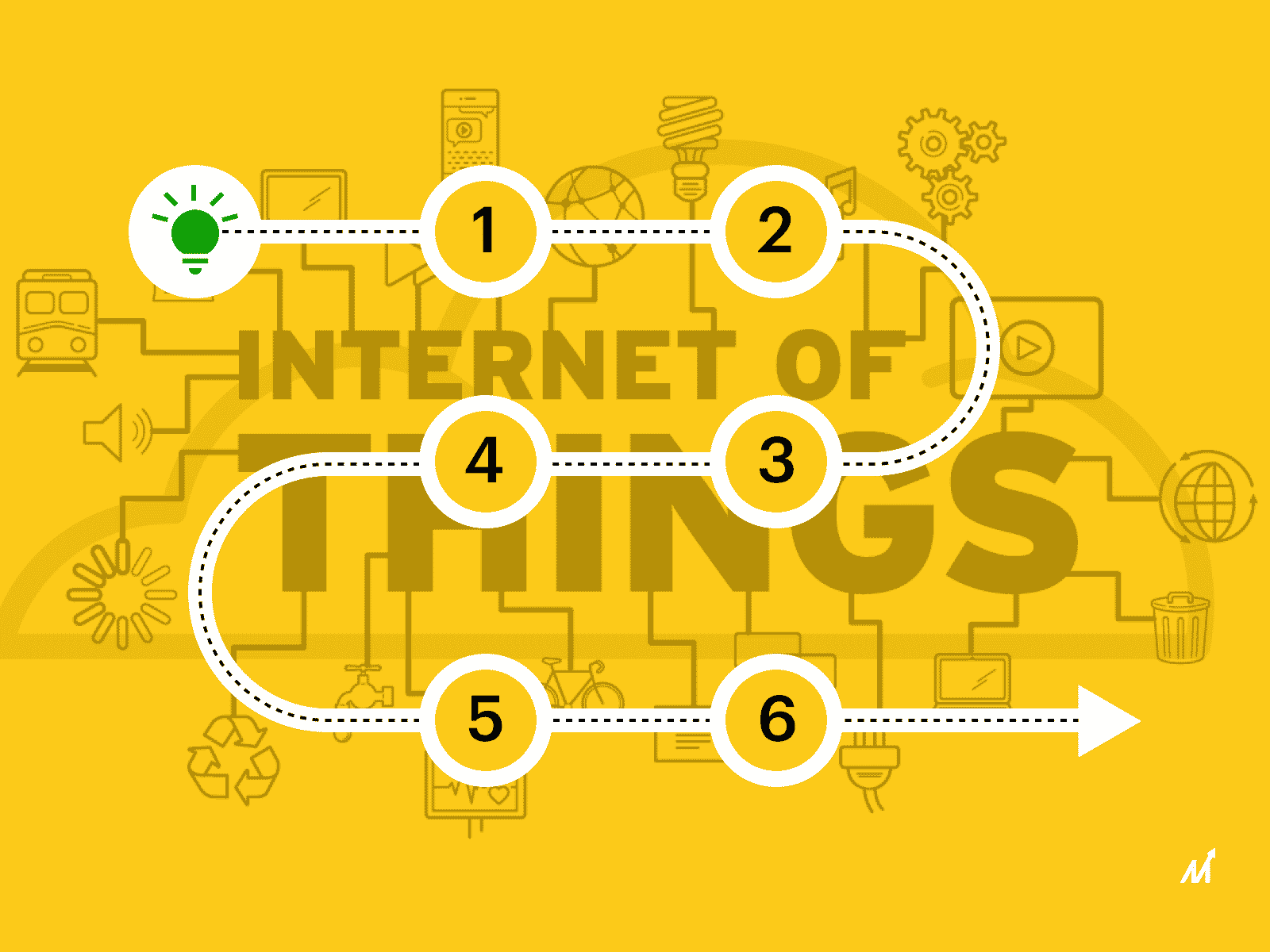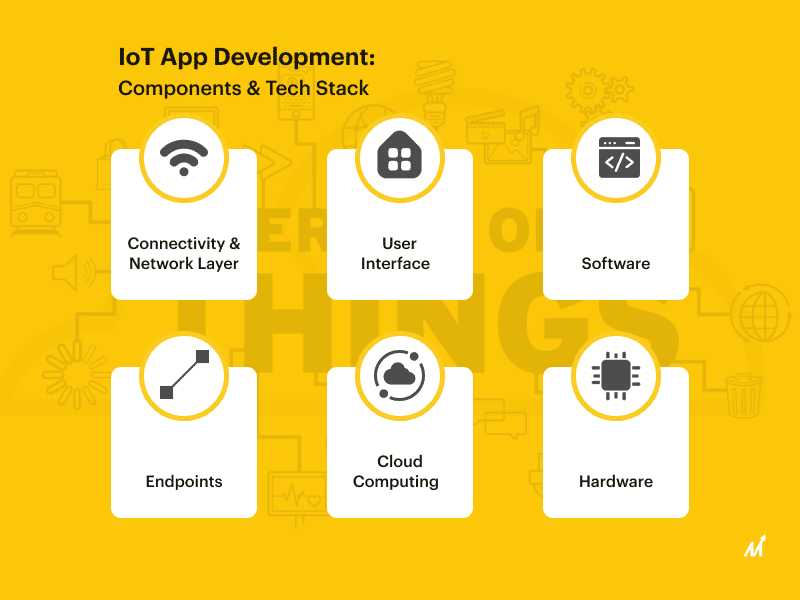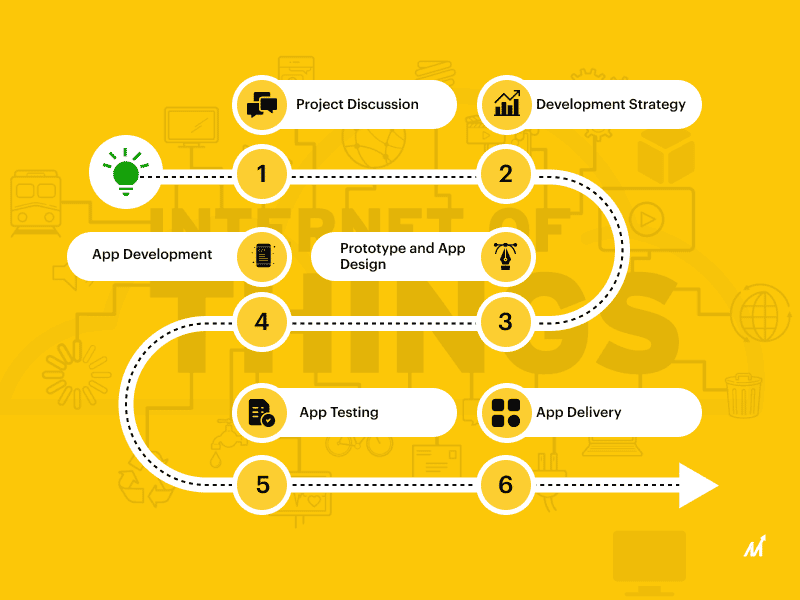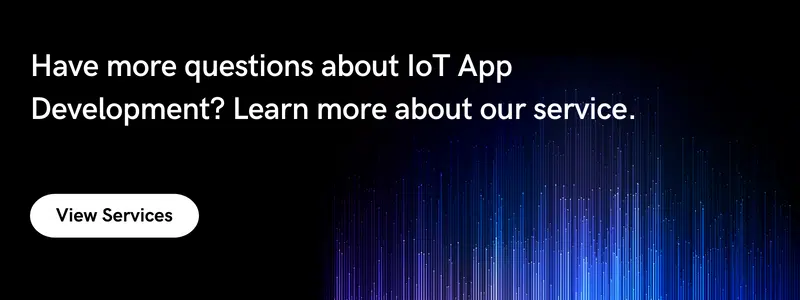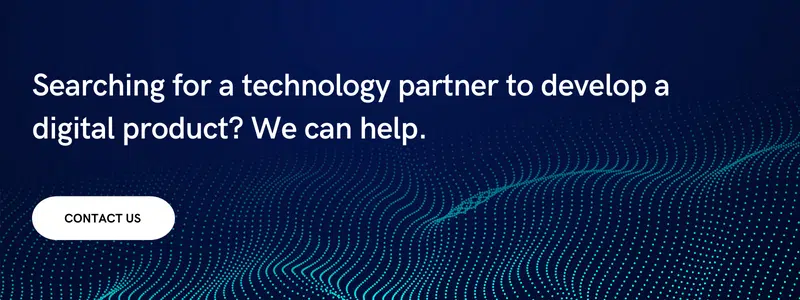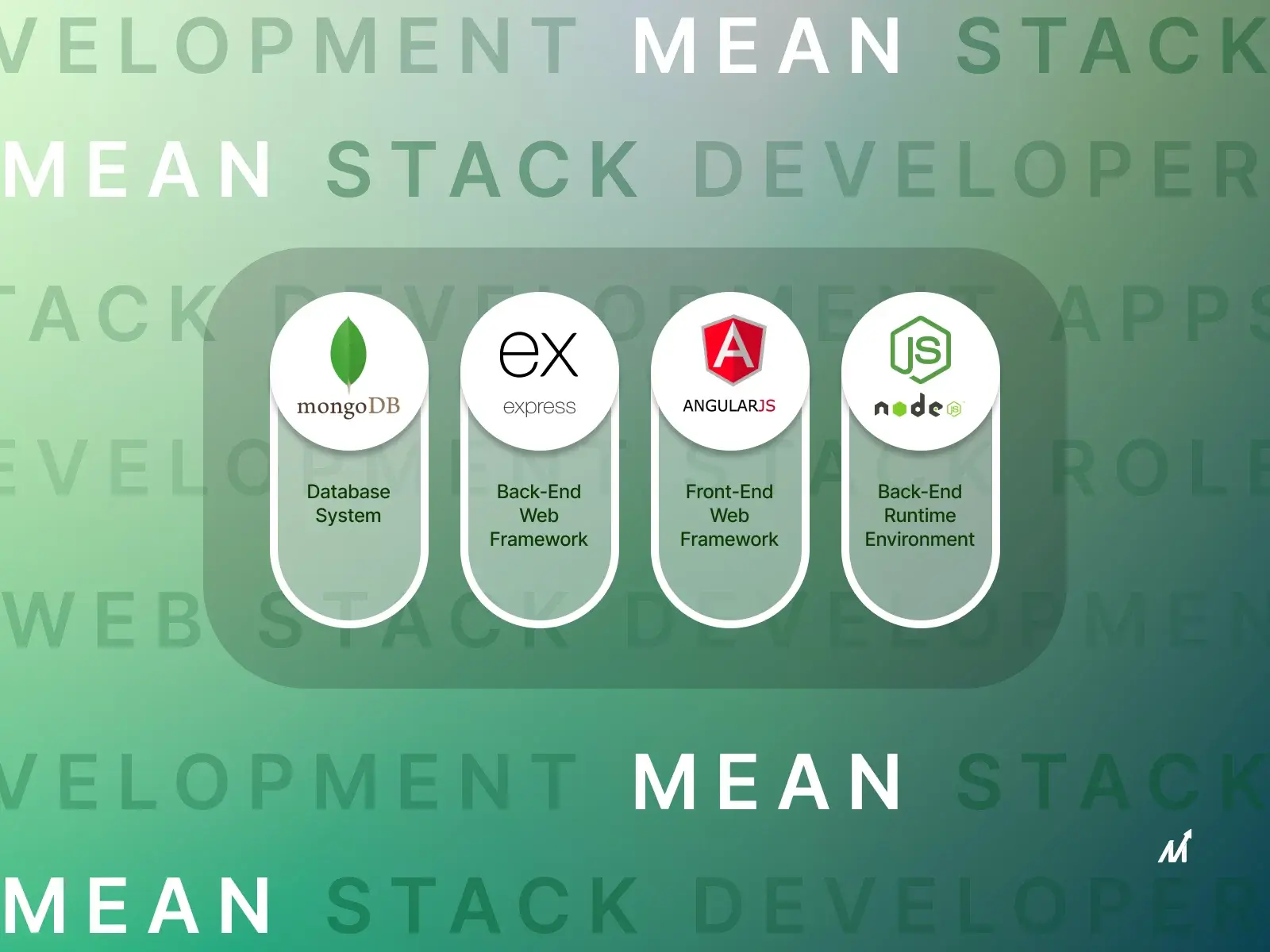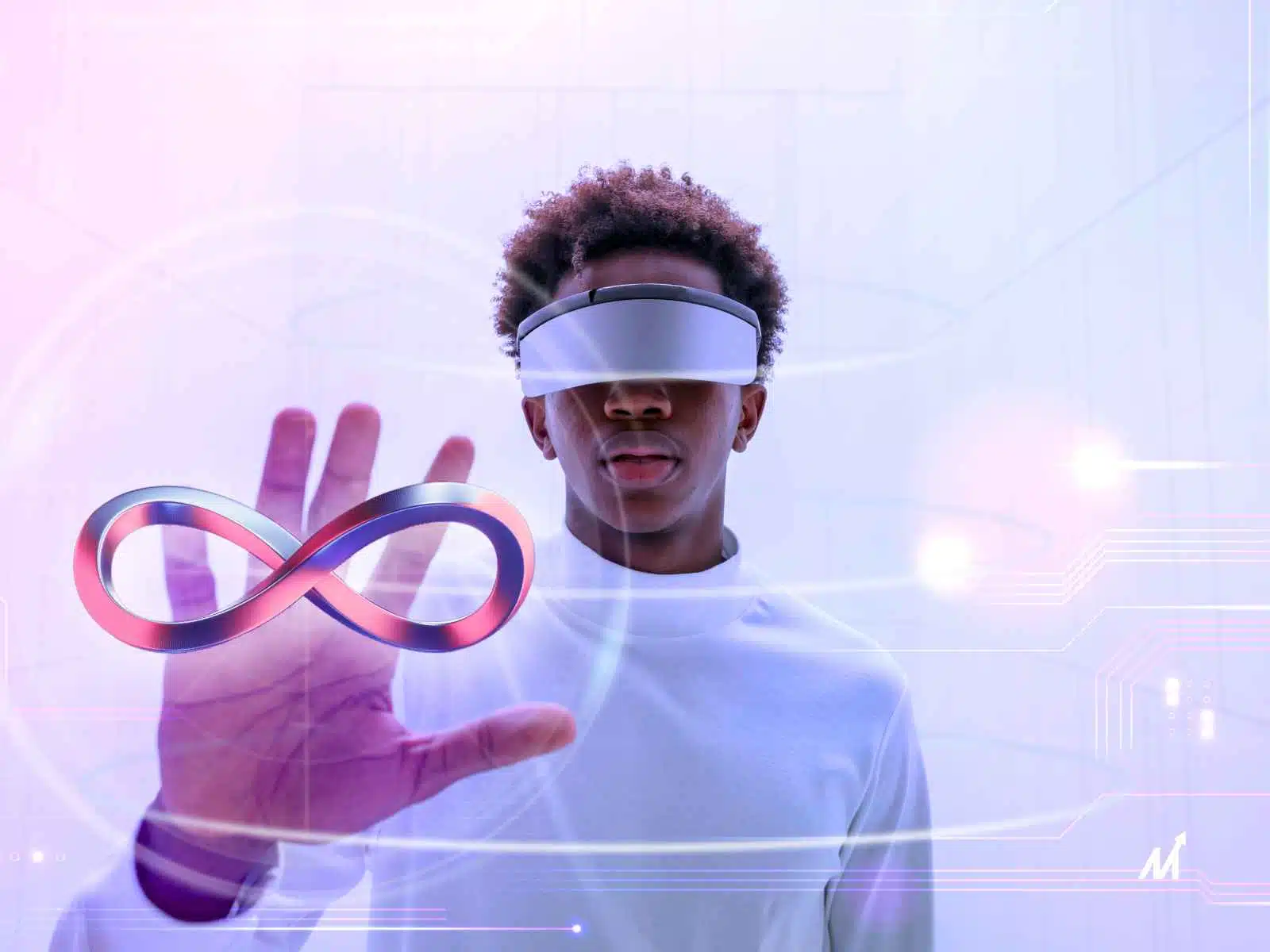IoT App Development: Introduction
If simpler times called for more straightforward measures, then technical times need even more technological succession to make a living– the simplest! For example, the capability of a smartphone app to affect a person’s daily presence (digitally) has dramatically increased thanks to IoT app development.
Owing to the strength of IoT mobile applications, one can now use their smartphones to purchase a new one without waiting in a queue or having to visit a store. Similarly, your cat at home can be fed, too, even if you’re up in the air, flying. IoT has made life simple, or shall we say, it has rephrased life in its simplest form through digitalization.
But what makes a treat for living is also complex in creation. IoT project creation is complicated, with several interrelated technical IoT components that should be integrated seamlessly to get the desired results. Thus, this article will take you to the IoT app development process for your following business needs and help you choose which IoT development service company to opt for the best results! Let’s begin.
IoT App Development: Components
An IoT project comprises several layers of complex technology. Furthermore, it’s essential to achieve this in a precise, secure, and efficient manner in addition to its integration using appropriate solutions. Like:
1. Connectivity & Network layer
Internet access is required for the Internet of Things to transmit obtained information to your cloud database. It makes sense to pre-process data before transferring it to your cloud database since some sensors produce over 10,000 data points per second locally. You may limit the amount of unneeded data you transmit and keep in your cloud database. This may spare you the cost of data transport and storage expenses by evaluating, extracting, and summarizing your gathered data before submitting it to your cloud database.
Your IoT device uses your microcontroller, a tiny computer housed on a chip, to store and pre-process acquired data before synchronizing to the cloud database. Your microcontroller is equipped with a CPU, a small amount of RAM for data storage, a few kilobytes of EPROM or flash storage for embedded software, and solid-state memory for data caching. The networking capacity, whether wired or wireless, is the primary and most significant. A wired network is suitable if a device is fixed and has access to an external power source. But many don’t make sense with a wired network since physical connections are required to access the network. The most popular methods for connecting IoT devices are- through the Internet, which includes Wi-Fi, wireless modems, and mesh networks.
2. User Interface
IoT data must be accessible to users to examine and apprehend it. This is precisely where UI enters the picture of IoT app development here. A User Interface is a mechanism through which a human and a computer system communicate. A user interface (UI) is sometimes considered a basic software application on smartphones and computers. Still, it can also be anything from a wristwatch, a voice-activated Amazon Echo to the buttons on a modern tractor dashboard.
IoT solutions frequently use a dashboard to give users relevant information and insights. These dashboards must be reactive, which means they must function regardless of the user’s operating system, browser, or device.
You should conduct thorough testing on many devices, including tablets like the iPad and Microsoft Surface, phones like multiple iPhone and Android versions, and browsers like Chrome, Safari, Firefox, and Internet Explorer. Your dashboard should function perfectly on all of the above browsers by utilizing a responsive design framework. Users should be able to retrieve their information anytime, anyplace in today’s age and time.
3. Software
IoT software and the process of IoT app development uses frameworks, embedded systems, partner systems, and middleware to address its two central networking and action domains. Within the IoT network, these particular and master apps are in charge of data gathering, device integration, real-time analyses, and application and process expansion. Moreover, they integrate with essential business systems (such as ordering systems, robots, scheduling, and more) when carrying out related duties.
A. Data Gathering
This software controls data aggregation, light data security, light data filtering, and sensing. First, using specific protocols helps sensors connect to machine-to-machine networks in real-time. Afterward, it gathers information from various devices and disperses it in line with parameters. Additionally, it operates backward by circulating data between devices. Eventually, the system sends all the data it has gathered to a centralized server.
B. Integration Of Devices
The core of the IoT system is created by the software that supports integration, which links (creates dependent connections) all system devices. It makes sure that gadgets are cooperating and networking steadily. Since the IoT network cannot function without these apps, they constitute the fundamental software technology of the IoT network. They oversee each device’s different applications, protocols, and restrictions.
C. Analytics In Real Time
This software transforms data or input from numerous devices into workable actions or distinct patterns that humans can examine. Then, they evaluate information based on various settings and designs to carry out automation-related activities or offer the data needed by the industry.
4. Endpoints
A component at the end of a communication channel is an endpoint. It might be a node accessed through a linked network, device, tool, service, application, or node. The host computers connected to the TCP/IP network and the modems, routers, switches, etc., have traditionally been the endpoints of a communication system. Endpoints are now recognized as a crucial automation technology enabler for extending computing power from centralized backend systems to the network edge.
IoT endpoints, in particular, have the following qualities that make them crucial IoT components of the contemporary company IT strategy:
A. Extended Network
Endpoints are simply a further development of the current Internet. They expand the functionality of the Internet, but for objects instead of people. Endpoints-connected objects can communicate with one another and with backend systems across a network and absorb and act on the information they get from the Internet.
B. Sensors On Endpoints
Endpoint devices function as data sources. The information can take precise measurements like temperature readings or records of network activity at endpoint node nodes. This data, gathered and examined from many endpoints, includes insightful information that might influence essential business choices.
C. IoT Endpoints Are Widely Deployed
Endpoints may carry out computationally cheap actions over the dispersed network because of their low power consumption.
D. Automation
The ability to offer automation capabilities is one of the most often used IoT endpoint applications. For example, a system that obtains instructions to carry out a mechanical movement may be linked to an endpoint.
5. Cloud Computing
IoT cloud computing collaborates to store data and provides convenient access when needed. It’s crucial to remember that using cloud computing simplifies sending huge data packets produced by the IoT across the Internet. Cloud computing is one element that helps the Internet of Things succeed. Thanks to cloud computing, users can complete computer activities utilizing services made available through the Internet. The Internet of Things and cloud computing are all now interconnected thanks to the utilization of both technologies together, acting as a sort of catalyst. These are genuine future technologies that will have several advantages.
The challenge of storing, analyzing, and accessing massive volumes of data has emerged due to the rapid development of technology. The collaborative usage of cloud and Internet of Things technology represents incredible innovation. Combining advanced processing of visual data streams with new monitoring services will be feasible. For instance, sensor data may be transferred to the cloud and retained for intelligent monitoring and activation by other devices in the future. The objective is to turn data into insights, motivating practical and profitable action.
6. Hardware
IoT hardware encompasses many gadgets, including sensors, bridges, and routing devices. These Internet of Things (IoT) devices control critical processes and features such as system activation, authentication, action definitions, communication, and the detection of support-specific objectives and actions.
IoT App Development: Kick-Start For Your Business In Just 6 Steps
IoT App Development Step 1 – Project Discussion
The creation of products requires effective communication. Therefore, the IoT application development team will have the knowledge they need to comprehend user interaction with the goods and to maintain the end user’s interface after a comprehensive conversation with the IoT project manager to guarantee a full grasp of the IoT product.
By 2025, more than 41.6 billion IoT devices will produce 79.4 Zettabytes(ZB) of data. This report asserts that more IoT initiatives are expected to fail than thrive as technology advances. Therefore, it is crucial to have effective business communication from the beginning of creating IoT products to comprehend the use case.
IoT App Development Step 2 – Development Strategy
Several hurdles are involved in creating a customized Internet of Things application or solution, including connection and cross-platform interoperability, privacy protection, data collecting, and data processing. The difficulties mentioned above might be avoided by selecting the best IoT platform for development and deployment. Therefore, the most crucial approach in IoT app development is picking the right platform.
After receiving the data from the IoT project manager, the app development crew will reassemble to establish a solid plan that includes a timetable, funding, project scope for hardware and software, etc. Parsed underlines how crucial it is to make these methods implementable while keeping them on time and within the allocated budget.
IoT App Development Step 3 – Prototype & App Design
IoT product prototyping is an essential step in the development process since only a working prototype can be used to analyze and validate the many aspects of an IoT product’s business case.
The project-specific needs for app design will differ. Specific projects demand comparatively more work in terms of design considerations. Following the design phase, a “Prototype”—a visual mock-up of the app—will be created to help design discussions with the project leader and provide a distinct vision for the finished product. The proposed IoT product is assessed and verified to see whether it will adequately fulfill corporate and IoT project implementation criteria at this step.
IoT App Development Step 4 – App Development
According to Machina Research, IoT development has typically been done with cost-cutting in mind. But these days, developing IoT products and applications is concentrated on boosting revenue while enhancing competitive differences and supporting the company’s long-term viability.
By 2025, there is expected to be a 3 trillion US dollar income opportunity for companies who use IoT, an increase of 750 billion US dollars from 2015. Parsed advises that you work with a mobile app developer with an excellent technical aptitude for resolving issues with algorithms and data structures, good communication and programming abilities, transparency, and error handling.
IoT App Development Step 5 – App Testing
The app development team requires an intensive testing approach for an IoT app. Therefore, a skilled IoT app developer must be dedicated to this procedure to guarantee client delight.
While testing IoT hardware involves confirming the device’s performance in terms of functional parameters, service compatibility, safety, connectivity, processors, operating systems, interfaces, and device standards. Using gray box testing in an automated setting with an actual operating system is the most efficient testing of IoT apps.
IoT App Development Step 6 – App Delivery
The time we have all been looking forward to! Once the testing in step 5 is complete, the app is ready to be released to the public and uploaded to the app store.
This step of developing an IoT application that helps the finished product go to market. This product release phase is essential in proving the item’s viability in the market after the many stages of design, development, and testing. It also collects numerous user data points to enhance the system through data analysis and problem repairs.
Essential Focus: Strengthening Security in IoT Apps
In today’s fast-paced tech world, the Internet of Things (IoT) is a big deal. It’s always changing and getting better. But with all this change, it’s tough to keep things secure. Every device connected to an IoT network could be a weak spot if not properly protected.
The central hub of any IoT setup is the application that controls it. This app collects data from various devices like sensors and cameras. If someone were to gain unauthorized access to this app, they could misuse the devices and even spy on the users. That’s why having strong security in place is crucial.
Here’s a step-by-step guide to make an IoT app as secure as possible:
1. Make a Security Plan
Before doing anything else, it’s important to have a detailed plan for how to keep the app secure. Unlike other types of technology that have well-known security rules, IoT is still pretty new. This means a custom security plan is often needed.
2. Use Data Encryption
After having a plan, the next step is to make sure that all the data that’s collected and shared is encrypted. Encryption changes the data into a code that can only be understood if you have the right ‘key’ to decode it. This helps in making sure that even if someone unauthorized gets access to the data, they won’t be able to understand it.
3. Control Access
Another important thing is to control who has access to the app and the data. This is done through something known as ‘access control’. Only people who need to use the app should have the ability to log in. And even among those people, only give them the access they need to do their jobs. For example, a regular employee might not need access to sensitive customer data, so they shouldn’t have the ability to view it.
By following these steps, an IoT application can be made much more secure. This will protect the devices connected to it and keep users’ data safe.
IoT App Development: Tech Stack
The variety of technologies, programs, and standards utilized for IoT app development is called the ‘IoT tech stack.’ It includes everything needed to create the application, send data, and produce valuable alerts or insights into a mobile app. The process of IoT app development demands a good IoT tech stack for it to succeed.
1. Programming Languages
Nothing prevents users from selecting the language in the same manner as they would for a desktop project. When running Linux, a Raspberry Pi behaves quite similarly to a desktop.
When the language argument reaches the servers, it has no effect. Instead, they communicate with the hubs and sensors—typically using a microservice architecture—and then send the data into conventional databases. Here are a few of the best options to lay the groundwork for the upcoming wave of Internet-connected objects.
Java
The benefits of Java are widely established. For example, code may be written and tested on a desktop computer, then transferred to any Java Virtual Machine chip. That indicates that the code can execute on platforms where JVMs are popular (servers and tablets) and on the tiniest computers.
Since the standard was adopted in 2000, Java ME, or micro edition, has been accessible on compact phones and other embedded devices. It conserved space with a tiny number of libraries, tools, and other utilities. Java SE Embedded is the main emphasis because it has many more capabilities than the Standard Edition.
C
The language is still the preferred option for many developers who code for the bottom layer of software, the one nearest to the hardware, despite the grammar being clogged with punctuation and the myriad of little mistakes you may make. You can play with every aspect of the code since the language conceals nothing from you, allowing you to get the most outstanding performance out of weak hardware. Every piece is flippable. There is access to every value in the IoT tech stack. Simply avoid mistakes because there aren’t many safety nets.
Python
It was first developed as a scripting language to link together actual code, but more and more developers are using it as their primary language. The developers are free to select the language to simplify their lives, which is increasingly becoming Python when tiny devices have sufficient memory and processing capability.
2. Cloud Platforms
Reduced upfront expenses are encouraged by the IoT Cloud Platform, which also offers a flexible price structure. Additionally, it frees you from the concerns of hardware failure, which would create additional costs. Further, it will protect you against any business losses brought on by service outages.
3. Sensors
For years, sensors have been employed across numerous industries, including healthcare, aviation, manufacturing, and automotive. In addition, the gadgets you use for personal and business purposes may now have sensors since they are so small and affordable. In addition, as new goods and services add internet-connected sensors, the sensor layer of the IoT tech stack keeps growing.
Your inventive rivals are releasing new gadgets with various sensors and adding sensors to their smartphones and tablets. These sensors link with your smartphone using Bluetooth LE to communicate the data they have collected to the cloud without needing a direct internet connection. For instance, the Kickstarter project Sensordrone integrates several environmental sensors into a tiny dongle.
Watches, contact lenses, bracelets, and textiles have different sensors. For example, a method for electromagnetic tattoos that vibrate in response to incoming messages or calls was recently patented by Nokia. This is achievable by stamping or spray-tattooing a substance onto your flesh. You may then interact with the sensor by pairing the material with a smartphone or tablet.
4. Frameworks
An IoT application framework can make it easier to deal with heterogeneous hardware and software components, navigate distributed system technologies, handle a large amount of data, design the application’s architecture, implement it in a program, and write particular code.
5. Protocols
The IoT tech stack includes protocols as an essential IoT component. Hardware would be judged worthless without IoT protocols and standards. This is so that hardware may communicate data thanks to IoT standards. The end user can also extract meaningful information from these delivered data components.
Industries With The Most Significant Demand For IoT
1. Logistics
IoT is revolutionizing the logistics sector. The Internet of Things can provide machine-to-machine connections in logistics and transportation that allow cars, packages, containers, loading equipment, and other assets to interact along the supply chain.
2. Healthcare
The real-time position of medical equipment, including wheelchairs, defibrillators, nebulizer treatments, oxygen pumps, and other monitoring equipment, is tracked using IoT devices tagged with sensors. In addition, real-time analysis of medical personnel deployment at various sites is also possible.
Future healthcare might be more affordable and effective because of the IoT. For example, it may facilitate the development of more specialized and patient-focused equipment. Additionally, IoT will provide patients with better access to data and individualized treatment, which will reduce the number of hospital visits.
3. Transportation
The market for IoT in transportation was estimated to be worth $83.25 billion in 2020, and it is anticipated to grow to $495.57 billion by 2030, with a CAGR of 19.9% between 2021 to 2030. The Internet of Things (IoT), which combines the three biggest technological and commercial trends of mobility, automation, and data analytics, can change how transportation systems collect data and information.
4. Agriculture
IoT innovative agricultural solutions are made to assist crop field monitoring by utilizing sensors and irrigation system automation. Consequently, farmers and related brands can quickly and hassle-free monitor field conditions anywhere.
The enhanced agility of the operations is one advantage of implementing IoT in agriculture. Thanks to real-time surveillance and forecast systems, farmers can swiftly react to any significant weather change, humidity, air quality, and the condition of each item or soil in the field.
5. Smart Home
One of the most critical worldwide economic catalysts for the expansion of the innovative home sector is the IoT platform. IoT-based technology at home offers energy-saving features. By 2025, GSMA Intelligence will project around 25 billion IoT connections worldwide.
6. Retail
IoT in the retail sector is closely linked to GPS and RFID technology, which assist firms in tracking items along the supply chain. It gives merchants the transparency they need to keep an eye on goods’ movement, conditions, and location while pinpointing a delivery date. By 2028, the worldwide Internet of things in retailing industry is anticipated to achieve USD 182.04 billion, growing at a CAGR of 26.0 percent.
IoT App Development: How Can Markovate Help You?
Markovate offers mobile app development services to create commercial, native, blended, progressive, AI, and IoT-enabled mobile applications. We support you through the thick and thin of app building, from app strategy to product launch.
You can now create an application-induced corporate business using Markovate’s IoT development abilities. Our team of industry experts can assist you in creating an engaging IoT platform that prospers on the characteristics of your business and the credibility of our work. In addition, our specialists guarantee a smooth IoT app development for the business experience that brings you scalable success and industry growth.
IoT App Development: FAQs
1. What are the prerequisites of an IoT app?
Before data exchange, the IoT Device Software should verify the IoT Service Platform’s identity. In addition, the IoT Service should be suited to the level of authentication strength utilized. Therefore, the IoT Service Platform must verify the IoT Device’s identity before data exchange.
2. I want to project on the IoT (Internet of Things). How do I start?
The aptest and most feasible way would be to get in touch with a renowned app agency and have a look at the projects they have spearheaded. For example, Markovate is one of them. With a significant portfolio of work backing us, we are the go-to in the current scenario. Markovate can assist you in IoT app development for business.
3. What are some advantages of using IoT?
IoT offers improved performance, control, and transparency. IoT establishes a networked ecosystem of continually linked gadgets. Despite any security precautions, the system provides minimal supervision. As a result, users are now vulnerable to many types of attacks.
4. What are the downsides of IoT?
Disadvantages of IoT include interoperability issues, lack of career opportunities, and technological addiction.

I’m Rajeev Sharma, Co-Founder and CEO of Markovate, an innovative digital product development firm with a focus on AI and Machine Learning. With over a decade in the field, I’ve led key projects for major players like AT&T and IBM, specializing in mobile app development, UX design, and end-to-end product creation. Armed with a Bachelor’s Degree in Computer Science and Scrum Alliance certifications, I continue to drive technological excellence in today’s fast-paced digital landscape.

